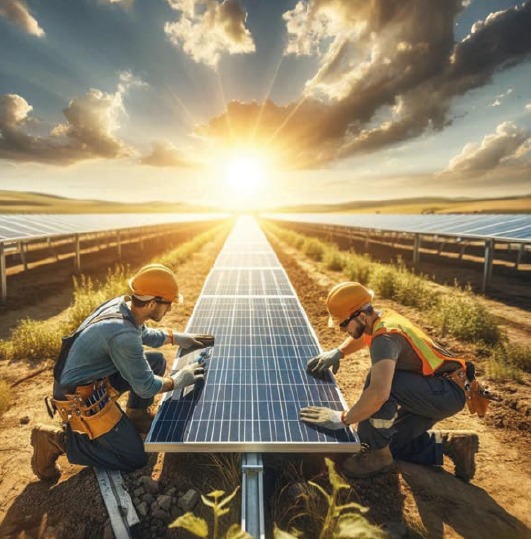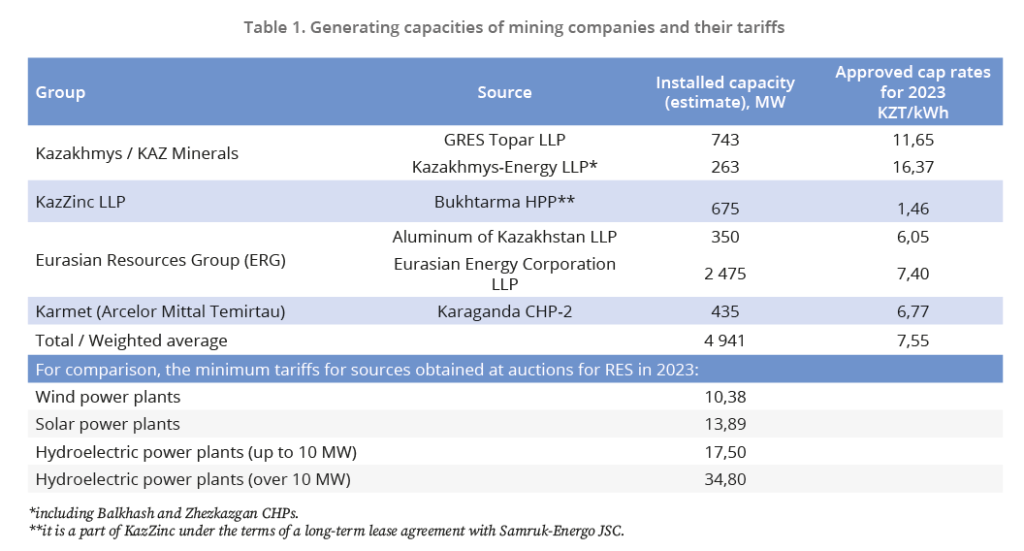Industry News28.05.2024
Overcoming obstacles: why are the leaders of the mining industry in no hurry to switch to renewable energy?


Sergey Vassilyev,
Director of PF Environmental
Development Fund of Almaty
Despite the dynamic development of renewable energy in Kazakhstan over the past 10 years, mining companies are still in no hurry to invest in the construction of RES facilities. In the mining industry, there are only isolated cases of projects implemented by large companies. Thus, in 2019, a subsidiary of Kazakhmys put into operation the Kengir solar station (Ulytau region) with a capacity of 10 MW, and in 2023 - the Balkhash station with a capacity of 50 MW, which is planned to be expanded to 100 MW by the end of 2025. The remaining projects are still at the design or construction stage - the Khromtau-1 wind power plant (155 MW) in the Donskoy OMPP (ERG) area, the expansion of existing cascades of small hydroelectric power plants to 106 MW with the participation of KAZ Minerals.
In order to understand why Kazakhstani mining giants are not actively investing in RES facilities, it is necessary to analyze in more detail the situation of the four largest mining groups (Kazakhmys/KAZ Minerals, KazZinc, Eurasian Resources Group, Karmet), which are the flagships and main beneficiaries of enterprises in the industry of extraction and processing of non-ferrous and ferrous metals. Based on the results of such an analysis, it can be stated that these companies face a number of insurmountable obstacles on the way to decarbonizing their energy consumption.
Firstly, despite the constant decline in the cost of renewable energy, it still cannot compete with coal and hydro plants owned by mining giants. The four above-mentioned groups control almost 20%of all installed capacities of Kazakhstan's power plants, and excluding RES facilities, their control reaches almost 25% . At the same time, the existing mechanism of Single Group of persons allows companies to purchase electricity directly from their generating capacities without participation in the system of a Single Buyer.

As can be seen from the table, among all RES facilities, only wind power plants can be more or less competitive in terms of electricity costs. However, their use also rests on the problem of the need for round-the-clock operation of critical mining and processing equipment, which is the basis for both productivity and safety in mining and processing processes. In our opinion, this is the second and most significant obstacle to the transition of mining companies to renewable energy sources.
Significant part of the mining equipment, including single-stall systems, ventilation systems, pumps, as well as ore processing plants, must operate continuously to maintain the working process. Sudden stops of equipment lead not only to a decrease in productivity, but also create serious safety risks, potentially blocking miners in mines, or causing the collapse of structures. The same interruptions in ventilation systems can lead to dangerous accumulations of gases, endangering the lives of miners.

In terms of ore processing and concentrate production, the complexity of equipment systems such as flotation cells, ball mills and thickeners requires continuous operation to avoid damage, loss of valuable minerals or inefficient restarts during unplanned shutdowns. Even submersible pumps or fire-fighting equipment, if the continuity of their operation is disrupted, can lead to unreliability of their use during emergencies.
The importance of uninterrupted power supply for these critical systems cannot be overemphasized. That is why the intermittent nature of renewable energy sources, especially wind power plants, represents a significant obstacle for mining companies on their way to using clean energy. The use of RES storage devices could be one of the optimal solutions, however, this significantly increases both the initial level of capital investments during the construction of the station and the cost of its maintenance. As a result, even WPP become uncompetitive compared to coal and hydro stations of mining corporations.
The third major obstacle is the high debt burden of mining companies. The high financial obligations and debts of most operating mining companies (including small players) limit their ability to make significant investments outside their industry. As a result, from the point of view of attracting debt financing, it is more profitable for companies to invest in expanding existing energy assets, bringing available capacity to the installed capacity, than to implement RES projects from scratch.
Thus, mining companies in Kazakhstan have serious obstacles in the transition to renewable energy. High tariffs and instability of energy supply from RES facilities, as well as the high debt burden of the companies, lead to the fact that the integration of renewable energy into the mining sector seems difficult and financially unrealistic. Moreover, in the hierarchy of environmental problems, decarbonization is currently not the leading one among enterprises in the mining industry, yielding the palm to the issues of environmental protection and occupational safety. The closure of Cobre Panama copper mine, owned by Canada's First Quantum , or the withdrawal of Arcelor Mittal Corporation from Kazakhstan are vivid examples of the risks that mining companies may face with insufficient attention to the impact of industrial waste on the natural landscape and occupational safety.
Meanwhile, the gradual transition to RES is a global trend and in the long term, Kazakhstani enterprises will have to switch to clean energy. Therefore, it is already necessary to develop a comprehensive approach to stimulating mining companies. Such an approach can include both innovative financing mechanisms and tax exemptions in exchange for investments in renewable energy sources, as well as joint efforts in research and development to improve the efficiency of renewable energy storage and the stability of the energy system.
Cooperation between government agencies, financial institutions and industry participants plays a key role in creating an enabling environment that supports and encourages the transition to renewable energy for mining companies. Only collective action and innovative solutions can turn these challenges into opportunities, contributing to a sustainable and green future for Kazakhstan's mining industry.
Meanwhile, the gradual transition to RES is a global trend and in the long term, Kazakhstani enterprises will have to switch to clean energy. Therefore, it is already necessary to develop a comprehensive approach to stimulating mining companies.
Kazakhstan and UAE reaffirm strategic energy partnership with 1 GW wind project
Solar becomes EU’s top power source for the first time ever
How decentralised renewables transform healthcare services in rural Zimbabwe
Chinese company to build solar and wind power plants in Kyrgyzstan
Seaturns raises €2.45 million to industrialize wave energy technology and accelerate global rollout
Trump signs executive order to end subsidies for wind and solar energy
Uzbekistan's solar and wind power plants generate 5 Billion kWh since beginning of the year
Green Corridor Alliance JV registered in Baku to promote green energy development in Central Asia and the South Caucasus
In the EU renewable energy supply grew by 3.4% in 2024
IRENA accepting renewable energy project proposals in Central Asia until August 15
Astana to host Electronica Expo Kazakhstan Electronics Exhibition
WB gives rundown of Azerbaijan's green energy grid volume prospects
US solar sets new records as renewables nearly match natural gas – EIA
‘Wings’ on poles: Bill Gates-backed breakthrough wind turbine facility breaks ground
Perovskite tandem solar cell achieves new efficiency record
Kazakhstan and China endorse draft SCO joint statement on sustainable energy development
Innovative research on organic solar cells for space applications
Kazakhstan and Uzbekistan drive green energy progress in Central Asia
KazMunayGas launches pilot green hydrogen project in Atyrau
How private homeowners in Kazakhstan can make money from solar panels











